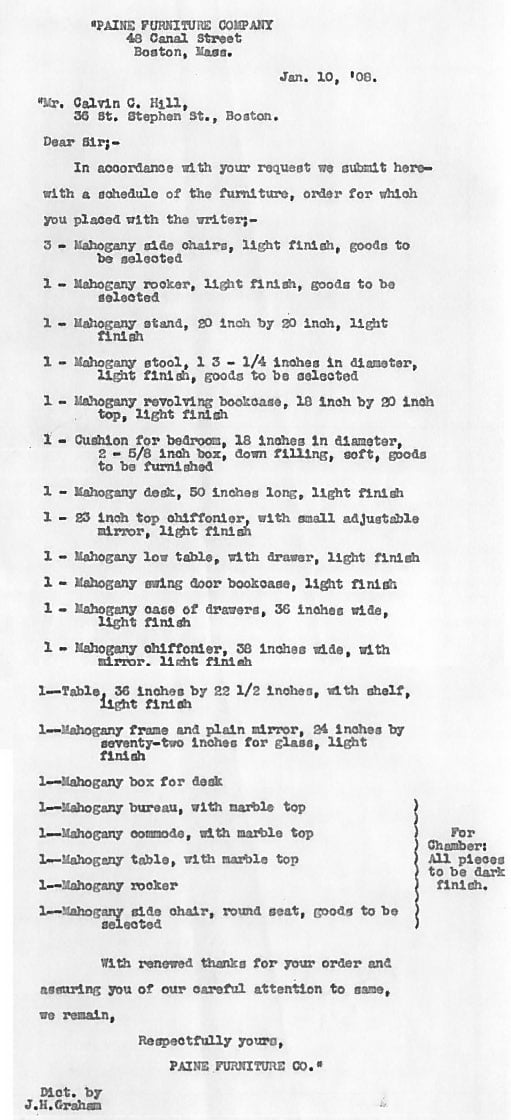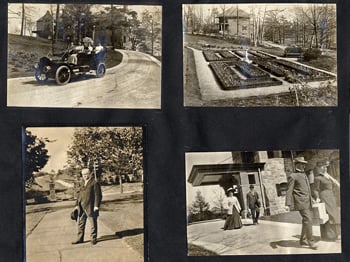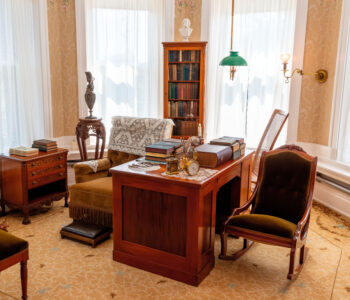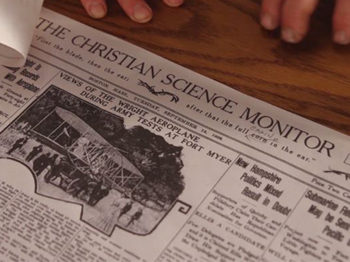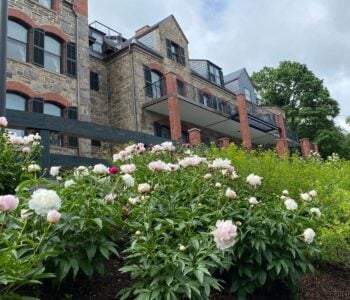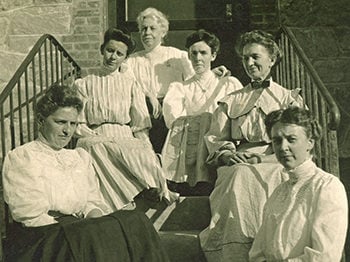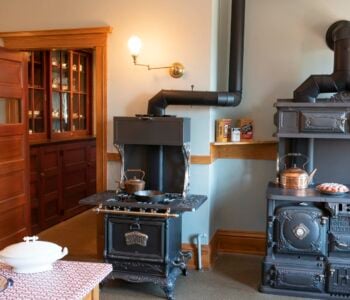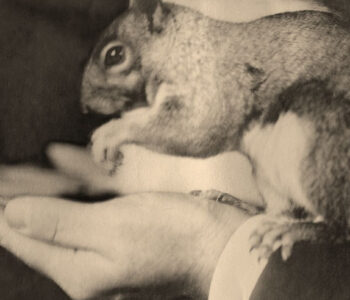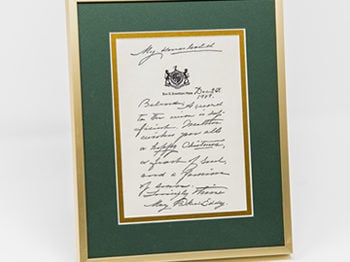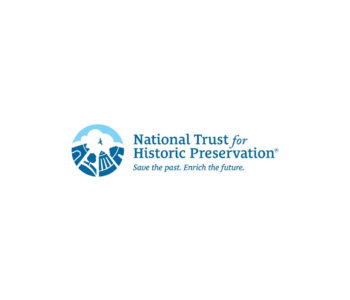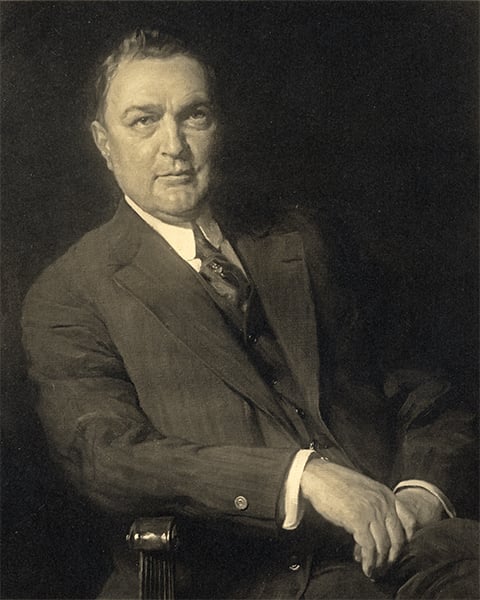
The scaffolding is up, workers in hard hats are busy repairing masonry, and the air resounds with the noise of hammers and saws. Repairs are currently underway at 400 Beacon Street, Mary Baker Eddy’s last home in Chestnut Hill, Massachusetts. The flurry of activity harks back to 1907 and early 1908, when the house was first being made ready for Mrs. Eddy’s arrival. As the Longyear staff begins the task of sleuthing out and replacing some original carpets, wallpapers, and furniture, over a century ago it was up to Mrs. Eddy’s staff to furnish and decorate the house entirely from scratch. One man involved in that project was Calvin Hill.
Mr. Hill first met Mrs. Eddy in April 1899. Mrs. Eddy had decided to install new carpets at Pleasant View, her home in Concord, New Hampshire, and she sent Laura Sargent and James Neal, two of her students,1 to Boston on a shopping expedition. Hill, who had moved to Boston a year earlier from Colorado in order to “see Christian Science and Christian Scientists at work,”2 was the store clerk on duty that day at John H. Pray and Sons. Sensing that more appropriate materials might be available, he immediately went to New York to find further selections to show Mrs. Eddy, and brought the samples to Pleasant View a few days later.
Writing of his first meeting with the Leader of the Christian Science movement, Hill later wrote, “I can truthfully say that I felt no strangeness. People are what their thoughts are, and I already knew many of Mrs. Eddy’s thoughts. I had become acquainted with them through her writings.”
Mrs. Eddy asked the members of her household who were present for their opinions of the carpet samples. Repeatedly, her staff deferred to her. Then she asked Hill for his opinion. He responded initially with deference as well, but when Mrs. Eddy made it clear that she did not like evasive answers, he gave her his professional critique:
“In your front parlor … you have very fine Brussels net curtains, beautifully upholstered chairs, and a couch with a delicate covering, but in this rear parlor you have black walnut furniture with portieres and wallpaper which do not go together very well. A fine quality plain carpet, green or old rose, would look well in these double parlors. On the walls you should have the best paper that money can buy, and it would also be nice to have new window curtains.”3
Mrs. Eddy must have appreciated this direct answer, because a few weeks later she asked him to find a decorator for Pleasant View.4
Hill started working for Mrs. Eddy shortly thereafter, and began by making purchases for her and for members of the household. On one of his early visits to Pleasant View, he noticed that an armchair Mrs. Eddy frequently used was looking rather frayed. He decided to surprise her with a new one. Hill took the exact measurements and had a reproduction made, and one afternoon while she was on her carriage ride, he made the switch. Mrs. Eddy was delighted with her new chair, and as a thank you gave him complimentary admission to the next Normal Class.5
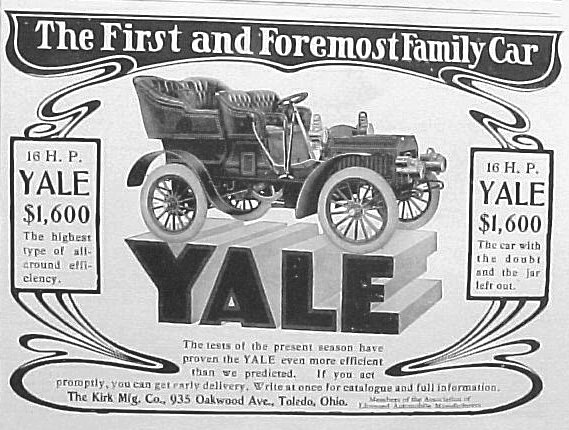
Another early purchase that Hill facilitated was an automobile, which Mrs. Eddy asked him to buy in 1902. Her horses Prince and Duke had been acting skittish during her afternoon carriage rides, and she wanted to accustom them to the sound and smell of the new-fangled machines. Hill found an inexpensive Yale touring car at a dealer in Lynn, Massachusetts, and over the course of several days—and repeated engine problems—managed to drive it to Pleasant View. Unfortunately, the training was only partially successful with the horses. The car was even less satisfactory, and in 1904 it was sold.6
When Mrs. Eddy decided to move to Boston, Hill was assigned to furnish her bedroom and study (Jeannette McLellan, wife of Archibald McLellan, would be responsible for the wallpaper and carpeting).7 Hill went to Paine’s furniture store in Boston to have Mrs. Eddy’s furniture reproduced in mahogany. There was doubt that it could be finished before she arrived, but just as the crew of carpenters and other workers labored day and night to finish renovating 400 Beacon Street on time, so did the manufacturer. In the end, the furniture was actually ready too early, and in order to protect the secrecy cloaking Mrs. Eddy’s move, it was stored in a warehouse under Hill’s name.8
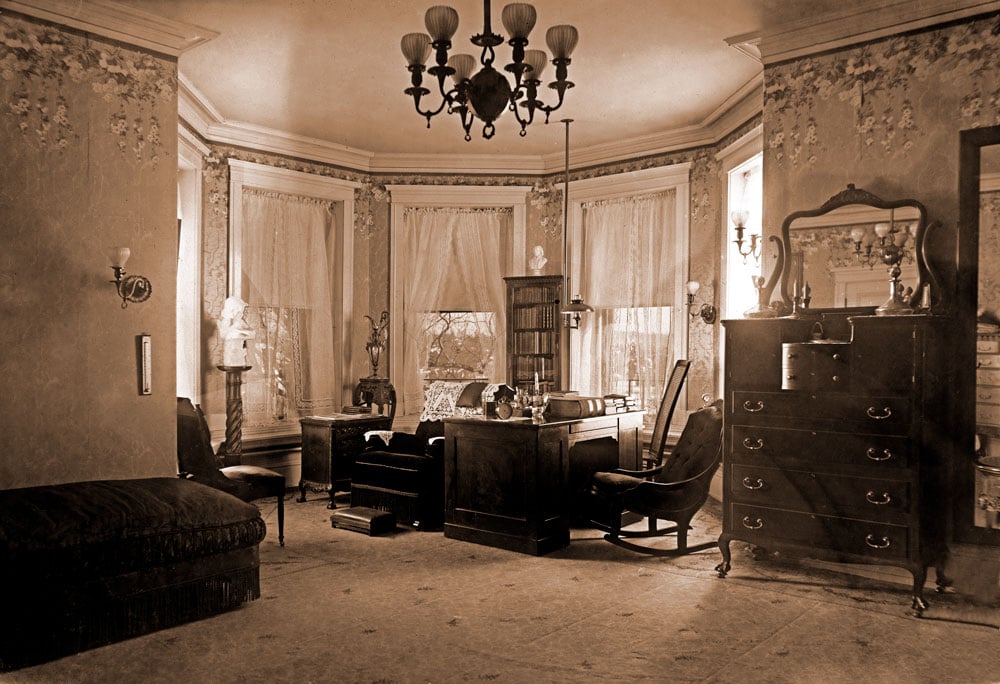
There’s a sequel to the story of the armchair that Hill had made for Mrs. Eddy in 1901. During preparations for the move to Chestnut Hill, he realized that it was again in need of replacement, and he had another duplicate made. Mrs. Eddy’s letter of thanks displayed not only her gratitude, but also her characteristic wit, as she responded with a line from an old poem, “I’ve bedewed it with tears, and embalmed it with sighs,” and then quipped, “not size!”9
Hill’s service to Mrs. Eddy went far beyond helping to decorate and furnish her homes. She entrusted him with carrying messages to her church’s Board of Directors and helping find and recommend workers for her household staff, and in 1901 she appointed him as a “First Member” of the church. Hill was also one of the trusted students she called upon to stand by her as a metaphysical watcher during the Next Friends lawsuit, attending each court session and reporting back to her afterwards.10
In 1905, Mrs. Eddy wrote in a letter to Calvin Hill, “You are more than a hill—you are a mountain, and the dwelling place of tenderness, unselfishness, Soul.”
Thanks to that unselfish dedication, coupled with Hill’s foresight in preserving the historical record, Longyear is able to consult a replica that he typed into his notes of the 1908 letter from Paine’s confirming the furniture order. As the Museum once again begins furnishing Mrs. Eddy’s bedroom and study, Calvin Hill’s work will have come full circle.
